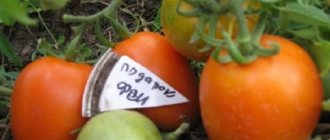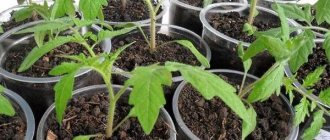The delightful hybrid variety of cherry plum “Gift to St. Petersburg” deserves special attention from Russian gardeners.
The culture is resistant to bad weather and has good immunity. The large-sized fruits have impeccable taste, abundant yields, and long shelf life.
Let's look in more detail in the article - the history of the origin of this variety, characteristics, pros and cons, stages of planting, and crop care, as well as possible diseases, reviews from gardeners, and average prices in our country for seedlings and fruits.
The history of the fruit
A versatile and very popular variety of hybrid origin .
It is also called “Russian plum” with an early ripening period. The cherry plum “Gift to St. Petersburg” was bred relatively recently (this is a new hybrid) in the last century - by hybridizing the cherry plum “Pioneer” and the Chinese plum “Skoroplodnaya”.
Crossbreeding work was carried out in the Krasnodar region, and experimental plantings and the collection of the first harvests were carried out directly in St. Petersburg.
As a result, breeders “awarded” the new variety with endurance and durability, maximum productivity; the fruits acquired not only an appetizing and beautiful appearance, but also larger sizes and improved taste.
This variant of cherry plum is officially included in the state register of breeding achievements in 1999 (for the North-Western regions).
Pollinator Planting
The hybrid variety Gift to St. Petersburg is self-sterile, so to obtain a harvest it is necessary to plan for planting other varieties. Plum and thorn trees cannot serve as pollinators.
Gift to St. Petersburg must be planted together with other varieties of cherry plum.
It is recommended to plant the following pollinating varieties:
- Rocket Seedling;
- Yellow Pavlovskaya;
- Pchelnikovskaya.
Description of the variety
The hybrid variety has the following distinctive characteristics.
Tree
The tree with a thick and spreading crown reaches no more than three meters in height and has a comfortable, short trunk. The average height guarantees “convenient” harvesting , and the reduced trunk allows you to form a crown already on the scion. Branches and shoots are elastic and weeping.
Leaves
The leaves are bright green, oval with a pointed top, and have an elongated shape. At the base, each leaf is maximally curved in the shape of a boat. The foliage has a glossy appearance, the edges are wavy, and the size is medium.
Flowers
During the (early) flowering period (early May), an abundance of snow-white flowers appears .
The variety is most decorative during this period. Each bud produces up to four flowers, the petals and bud are white. Small rounded corolla up to 1.5 cm in diameter. Petals are small with a wavy edge, oval, yellow anthers. There can be up to 15 stamens (straight), their height is up to 6-7 mm.
Fruit
Ripe fruits have a rich yellow color with an orange tint. The shape of the fruit is ovoid, the top is pointed, a weak abdominal suture is slightly noticeable. The weight of one berry can be 12-20 grams. The fruits are perfectly stored.
When cut, the fruit pulp is juicy and bright yellow, with thin fibers. The skin is elastic and thin, there is a small amount of waxy coating, and numerous subcutaneous dots (yellowish). The taste is original, sweet and sour.
Ripe fruit has many nutrients beneficial to the human body.:
- pectins;
- vitamin C, A, etc.;
- minerals;
- fruit acids and sugars;
- dry matter up to 16-18%.
A small oval stone (difficult to separate) weighs less than a gram and makes up 5% of the weight of the fruit.
In the photo there is a cherry plum gift to St. Petersburg:
Frost resistance
Cherry plum “Gift to St. Petersburg” is characterized by high winter hardiness, tolerates temperature changes (up to – 30-350C) and strong winds . The variety also has good drought resistance. The plant is able to recover well from mechanical damage.
The largest fruited cherry plum varieties, description
The taste of many fruits depends on the size of the fruit, the same applies to cherry plum. Large-fruited varieties are very popular, the best of them are:
Tent
The tree is small in stature, quickly reaches the required height and begins to bear fruit after 4-5 years of life. The crown is round, dense, and grows downward. The fruits are large in size, their weight can reach 40 grams. The pulp is sweet and sour, yellow in color; such fruits can be eaten fresh and used for preparations. The average yield of one tree is 35 kilograms. The ripening period is early, frost resistance is high, in addition to winter cold, the buds also tolerate spring frosts. The disadvantages include self-sterility and average resistance to lack of moisture.
Found
The variety has a medium ripening period, the tree grows to medium size, the crown is dense, round, slightly flat. The weight of the fruit reaches 35-37 grams, the flesh is rich yellow, the taste is pleasant, refreshing, sweet and sour. A tree can bear its first harvest as early as 3 years old, and after some time it will be possible to collect up to 40 kilograms of delicious fruits from one tree. The variety tolerates both winter and spring temperature changes well, and its drought resistance is average. Pollination occurs with the help of other varieties that bloom during the same period as Naydena.
A variety that bears fruit in medium terms. The tree grows very quickly, but at the same time reaches an average height, the crown is dense, slightly drooping, rounded. The fruits weigh up to 35 grams, the color of the pulp is dark yellow, the taste is sweet and sour, the seed is difficult to separate. The purpose of this cherry plum allows it to be consumed in any form. The winter hardiness of the variety is good, the same applies to the yield, which pleases with its high stability. Pollination is cross-pollination with other trees growing near the cherry plum.
Monomakh
The fruits of this variety are smaller in size than other varieties and weigh only 25-30 grams, but the distinctive feature will be excellent taste, juiciness and easy pitting. Also, this cherry plum has an unusual shape, reminiscent of Monomakh’s hat and a rich, purple skin color. The harvest ripens early, the tree bears fruit annually and in large quantities.
Productivity
The fruits begin to ripen on the crop 3-4 years after planting the seedling. Breeders guarantee stable and constant yields for many years. Fruiting begins early, in early August .
For fresh consumption, the fruits can be removed from the branches as they ripen and until the end of September inclusive. For storage, it is recommended to pick the fruits slightly unripe for better storage and transportation.
The average harvest per season per hectare of cherry plum “Gift to St. Petersburg”, with proper care, is up to 100 centners. A young tree will produce up to 8-12 kg of fruit, a 10-year-old tree will produce up to 30 kg of fruit per tree. More mature cherry plum will provide up to 50-60 kg of harvest.
Storage
It is better to collect cherry plum fruits “Gift to St. Petersburg” for storage during the period of technical ripeness (under-ripe), in dry weather. Fruits must be free from rot and mechanical damage.
Cherry plum should be stored in a dark and cool place, with a temperature of +2-70C and a humidity of 80-95%. It is necessary to store fruits in dry boxes; you can lay the layers with clean paper or shavings. If you follow the recommendations, the fruits are stored well for 1-3 months.
It is advisable to purchase cherry plum seedlings “A Gift to St. Petersburg” from producers in the same area where the planting will take place. The plant will already be adapted to the climate zone.
Advantages and disadvantages of cherry plum
“Russian plum”, like most fruit and berry crops, has its positive and negative aspects during the growing process. Pay attention to them so that in the future you can be skillfully guided when making a decision: to grow the “southern guest” on your plot or to abandon this idea.
| Advantages | Flaws |
| Early ripening Annual yield Long life cycle Drought resistance Relative frost resistance Undemanding to soil | Insufficient winter hardiness Self-infertility of most varieties Thickening of the tree crown (which can be easily corrected by using a regular method of sanitary and formative pruning) |
From the above examples it is clear that cherry plum has half as many disadvantages as advantages. Let us consider in detail one of them – self-sterility.
When choosing a cherry plum variety for your summer cottage, study its physiological characteristics
Planting a tree
Planting of seedlings begins in the spring; a suitable place for planting is on the sunny side, protected from strong winds - near the wall of a house, outbuilding, or fence. The work is carried out in stages :
- They dig up the soil so that it is saturated with oxygen and becomes loose and light.
- Groundwater should not exceed 1.5 m to the ground surface.
- 12-14 days before planting, prepare 70-70 cm holes. Compost, superphosphate and potassium are added to the dug soil. The mixture is poured into the hole.
- Then stakes are installed in each hole to support the young trees.
- Prepare strong, healthy seedlings with developed roots, elastic, not dry branches, bark without damage.
- In dry, sunny weather (+ 10-120C), when the soil has already warmed up sufficiently, the seedlings are planted in prepared holes. The root is carefully distributed along the bottom of the hole, filled in, and compacted.
- The distance between seedlings and other plants should be within 2-2.5 m. When designing a cherry plum garden, the distance between trees is increased to 2.5-2.80 m, between rows 3 m.
- The root collar needs to be slightly immersed in the soil.
- The trunk is tied with twine to a peg, the branches are cut by 1/3.
- Sufficient watering is carried out with 3-4 buckets for each seedling.
At the end, mulch the planting with dried soil or herbs up to 15 cm.
It is recommended to purchase planting material from specialized retail outlets and nurseries.
Reproduction methods
There are several ways to propagate cherry plums. This is cuttings, seeds and young shoots.
The longest and most labor-intensive is the seed method. It is used least often for reproduction. The seed is first grown at home, then when the seedling grows, it is transplanted into open ground. To plant cherry plum seeds, choose the largest and sweetest fruits.
The easiest way to propagate cherry plum is by cuttings or shoots. For cuttings, the material is prepared in the fall and kept in a cool place until the end of February. Then they root the houses. In the spring, when the soil warms up, they are transplanted into open ground.
For propagation by young shoots, bushes are selected that grow a little further than the mother tree. The bushes are dug up, separated from the mother plant and transplanted to a new location.
How to properly care?
To ensure abundant harvests, the crop requires care, which includes the following main points:
Disease Prevention
With the arrival of early spring, fruit crops should be sprayed to prevent pests and diseases. The same can be repeated in late autumn. Periodically, broken branches and dried leaves on the root soil are removed from the tree.
Watering
The variety is drought-resistant, but regular watering, especially for seedlings, is necessary :
in early June - after flowering, for good fruit set;- in July - for a good filling of fruits and a bountiful harvest;
- in August - so that the tree has the strength to ripen the fruits.
After harvesting at the end of September, it is good to water the cherry plum again generously.
Top dressing
With the beginning of spring, experts advise adding nitrogen fertilizer to the soil - this guarantees successful, rapid growth and survival. If the seedlings are planted in a well-fertilized hole, then after a year in the spring, fertilizer may not be applied. For mature trees, it is advisable to spread phosphorus-nitrogen-potassium fertilizer in a circle at the root.
Cherry plum will like feeding, which can be done before the buds begin to bloom, this is spraying with urea. It will not only bring beneficial substances to the branches and foliage, but will also protect against pests and diseases.
Trimming
For seedlings, it is reasonable to prune every other year , in the spring; 10-13 skeletal branches will be enough. Pruning not only helps to shape the crown, thinning out excessive density, but also guarantees good immunity and a healthy harvest.
Pruning shoots promotes favorable formation of new buds. It is carried out in early spring before the buds open. On strong branches, the cut should be covered with garden varnish - this promotes rapid recovery and protection from disease.
Wintering
In late autumn (October/November), the root zone is cleared of debris, leaves, dry herbs, and foliage. The trunk of the hybrid is whitened with lime mixtures for fruit trees - this is reliable protection against being eaten by hares and rodents.
They throw you under a tree:
- thick layer of spruce branches;
- burlap and other covering materials.
The presence of a large snow cover in winter will provide maximum protection from freezing.
Aftercare for plums
We must not forget about caring for cherry plums. Properly organized care will help increase productivity and act as a preventive measure against diseases.
Trimming
Formative pruning of cherry plum is carried out in the year of planting. Then, every year in the fall, sanitary pruning should be carried out to prevent the appearance of pests and diseases. Remove all dry or damaged branches. Thinning procedures are carried out in the summer as necessary.
Watering
The tree loves moderate regular watering. The soil is irrigated in the evening 2-3 times a week. Warm water is suitable for irrigation. Humidification with cold water leads to the development of fungal diseases. On average, one tree should require up to 50 liters of water. During the period of ovary formation and fruit ripening, the amount of irrigation is reduced.
See also
Growing and caring for plums in open ground, how to plant them correctly
Read
Top dressing
In the first half of the season, nitrogen-containing fertilizers are applied to the soil. Nitrogenous fertilizing promotes active growth of leaf mass and abundant flowering.
During the formation of ovaries, the soil is fertilized with phosphorus and potassium. Such fertilizing helps to increase yield and improve the taste of fruits. In addition, it is useful to water the beds with a solution of bird droppings, ash and add rotted manure to the soil.
Before the onset of winter, complex mineral fertilizers with a low nitrogen content are applied to the soil. Or you can use fertilizers without nitrogen.
Tree trunk care
Weeds should not be allowed to grow in the tree trunk circle. Pull them out as they appear. The soil is weeded several times a week before watering.
Preparing for winter
Before the onset of cold weather, the soil is dug up so that insects do not appear on the trees in the spring. You can also mulch the soil to prevent the roots from freezing. If mice chew on the bark in winter, the lower part of the trunk should be wrapped in burlap or roofing felt.
Diseases and pests
Despite good immunity, cherry plum is susceptible to some diseases and pests, including :
Aphids - destroy foliage. It is exterminated with insecticidal chemicals, and during the summer they are sprayed with a soap solution.- Coccomycosis - red spots on the leaves above and a pinkish coating below. Bordeaux mixture is applied either after harvesting or after flowering.
- Moniliosis - in the form of grayish ulcers, rot on the fruits. The use of Fitolavin, or a folk remedy in the form of a mustard solution, is effective.
- Hole spot is a fungus in the form of red spots. Before the kidneys swell, a sprayed solution of copper sulfate or the use of Phthalan is effective. After flowering, Bordeaux liquid is used.
Prevention will help you avoid trouble.
Agricultural technology requirements
Cherry plum is an unpretentious tree, but with proper and timely care it shows the best yield.
The seedlings are watered frequently so that they do not dry out and take root. For mature trees, watering three times a season is sufficient. The tree is watered in the spring, after flowering, then during fruit formation and a third time before harvesting. Use at least 6 buckets of water for each tree.
If fertilizers were applied to the planting hole during planting, then the tree will not need fertilizing in the next two years . From the fourth year, seedlings are fertilized annually.
Scheme for pruning the crown of a young plum tree.
Pruning of branches is carried out in early spring or autumn. During sanitary pruning, broken and damaged shoots are removed, and during shaping, the crown is given the required shape.
Wintering
Preparation for winter consists of whitewashing the trunk and protecting it from frost . Use burlap, spruce branches or spunbond.
You can whitewash with lime mortar or special paint, which can be purchased at a garden store.
Prevention
The peculiarity of this hybrid is that trees rarely get sick . To prevent pests and diseases, the following measures are recommended:
- trim branches in a timely manner and burn them;
- in the fall, dig up the tree trunk circle;
- treat wounds and cracks in the bark with garden varnish.
When a disease is detected, spraying with insecticides is used.
Advantages and disadvantages
Cherry plum variety “Gift to St. Petersburg” has its positive features and some disadvantages:
pros:
- decorative, spectacular appearance, especially during abundant flowering;
- low height allows you to harvest without problems;
- excellent frost resistance (up to -350C);
- the variety tolerates dry days and heat well;
- can grow on any soil, but periodic fertilizing is preferable;
- after planting for 3-4 years it gives a good harvest;
- very beautiful, appetizing, tasty and healthy fruits - they contain sugars, minerals, vitamins, etc.;
- small bone;
- immunity resistant to diseases and pests, guarantees an annual harvest;
- fruits are consumed both fresh and canned - for jams and preserves, compotes and juices, sauces, or marmalade and marshmallows.
The shelf life of fresh berries is 2-4 months. Fruits tolerate transportation well. The hybrid is used for industrial cultivation.
Minuses:
- thickening of the crown - annual pruning is advisable;
- Cherry plum is not self-fertile; fruit-bearing pollinators are required.
You should follow the planting rules and recommendations for caring for the hybrid, and do not forget about preventive measures, then the crop, with good growth, will provide the maximum yield of tasty fruits.
Reviews from gardeners
In search engines and on numerous forums, gardeners leave the following reviews about the cherry plum variety “Gift to St. Petersburg”:
young trees 4 years old (2 pcs.) gave the first harvest - golden fruits with a pleasant taste;- the hybrid is not capricious, excellent for northern regions, I get 15 kg of harvest per tree;
- My young seedlings of this variety survived the harsh but snowy winter very well and produced a harvest of sunny, tasty fruits;
- the crop did not like the long hot period (they were leaving), the foliage began to fall off and dry out, but everything was corrected by abundant watering;
- The bush standing nearby became sick, but the cherry plum did not become infected - strong immunity.
All gardeners highlight special, high taste qualities, good shelf life, and the possibility of canning. Read more about the opinions of gardeners here and here.
Main characteristics of the variety
The characteristic features of garden cherry plum are its adaptive properties; it is this aspect that attracted the attention of gardeners in the North-Western and Central regions of Russia. The description of the Naydena variety identifies its strengths of winter hardiness, drought resistance, pollination
Drought resistance and winter hardiness
The Naidena plum variety has increased immunity to low temperatures; its thick, dense bark with an extensive root system safely withstands long winters, cold autumns, and late springs. But despite its winter hardiness, it is weaker in warm regions. Thus, drought resistance is moderate.
Pollinators
Pollination is of great importance for the Naidena plum variety. Due to the fact that it is characterized by self-sterile development, the crop brings a high yield due to neighboring plum varieties. These include: Traveler, Nesmeyana, Vitba, Asaloda, Mara, Gift to St. Petersburg.
Traveler
Cherry plum Traveler in biological and physiological characteristics corresponds to the Naiden variety, with the only difference being that it is self-pollinating. It is characterized by early ripening fruits that are very juicy and sweet. Flowering time falls in the first ten days of April, the harvest is harvested in mid-July, which again coincides.
Nesmeyana
You can add the early self-sterile variety Nesmeyan to the company of the Traveler. It also depends on pollination; it is planted with other varieties to increase its dessert qualities. Its fruits are characterized by a slight sourness.
Vitba
The Vitba plum is a relative of the Naiden cherry plum; its origin is connected with the Belarusian Research Institute of Fruit Growing, where, as a result of crossing the Chinese plum and the common cherry plum, a hybrid variety was obtained. The peculiarity of the garden tree is its resistance to fungal diseases, which allows the full development of shoots and roots. Vitba boasts neat round fruits of medium density and tender pulp, from which the stone comes off easily.
Asaloda
The plum variety of Asalod is self-sterile; its fruits are purple-red in color and have a pleasant taste. It is suitable for previous varieties due to its rapid development; after 2-3 years the tree produces fruits weighing 25 g. Of particular importance is the fact that Asaloda is a winter-hardy and productive plant.
Mara
According to the description, the plum variety Mara is a vigorous plant with a spreading crown and medium-sized fruits weighing 23 g. According to the flowering period, Mara coincides with the Naiden cherry plum, but differs in the period of fruiting. This is a late harvest variety: it falls in the month of September. The fruits of the plant have loose pulp and a pleasant sweet and sour taste.
Gift to St. Petersburg
The hybrid plum culture Gift to St. Petersburg has the same roots as Naidena. During breeding in Crimea, two types of plum were used - Chinese Skoroplodnaya and Pionerka cherry plum. Garden plum is frost-resistant, has small fruits weighing 12 g. The skin of the fruit is thin, the pulp is pleasantly sweet and acidic, it is often used to make jam and preserves.
Flowering period
According to the description of gardeners, they note that the flowering of Naiden cherry plum begins in the first ten days of April. During this period, the crown is strewn with white flowers with rounded petals. In the middle you can see a stamen with a bright yellow anther - the harmony of flowering lasts about 8 days. Surprisingly, during this period the leaves seem to be waiting for their turn, which comes a little later.
Ripening time
The growing season lasts 2-3 years, after which the plum is ready to bear fruit. Already in mid-July, the fruits take on appetizing shapes, the pulp becomes juicy, and the skin tightly protects all the nectar. They fit tightly to the branches and rarely fall off. The ripening period lasts until September.
Productivity and fruiting
From one tree they harvest from 60-100 kg of whole fruits, it all depends on the region: in the south there is time to ripen more, in the north less. If you do not harvest on time, the fruits become overripe, the stem loses its strong properties, the plums lose their appearance and fall off.
Resistance to diseases and pests
The health of garden cherry plum depends on its initial resistance to fungal diseases and pests. Found has high rates. The variety has strong immunity, and with early spraying it is easier for it to fight butterflies and beetles that lay their larvae on the leaves.
Average prices for fruits and seedlings
Young seedlings with a closed or open root system in the Russian Federation can be purchased in nurseries or specialized stores.
The cost varies depending on the size of the planting material (height), age (1-3 years), and the distance of the area (planting) from the center of the country:
- Moscow and region - from 200 rubles. up to 1,500 rub. for 1 piece seedling
- Vologda, St. Petersburg – from 300-2,500 rubles. for 1 piece
- Regions of Siberia, Ural - from 600-2,800 rubles. and more expensive for 1 piece.
Seedlings from 4-5 years old cost 3,000 – 7,000 rubles. for 1 piece
The cost of fruits of the variety may vary depending on the yield, seasonality (cheaper in autumn, more expensive in winter, etc.) and transportation distance - 165-400 rubles.
If cherry plum is grown by local producers, then its price is low. Fruits brought from the south are many times more expensive.
Planting and preparatory work
The hybrid variety of cherry plum should be planted in a sunny area, protected from drafts. It is best to choose a southwestern or southern area in the garden. It is advisable that the tree is protected by a building wall or fence.
A suitable place for cherry plum is a dry and sunny area under the protection of a solid fence.
This variety is not picky about soil quality, but on loamy soils with neutral acidity, trees grow and bear fruit better. Cherry plum will not grow in wetlands. Groundwater should not flow too high to the surface.
Preparing the site
fertilizers are applied to the ground even before planting the tree .
At the site of future planting, you can grow mustard a year earlier and dig up its tops, enriching the soil with natural fertilizer.
- It is better to plant seedlings in the spring, and the holes should be dug in the fall or two weeks before planting.
- The dimensions of the planting hole are 70x70 cm .
Expanded clay, gravel, and broken bricks are poured into the bottom of the hole; this layer will serve as drainage and prevent rotting of the roots.
The minimum thickness of the drainage layer is 10 cm.
Turf soil mixed with the following components is added to the hole
- superphosphate – 0.3 kg;
- potassium sulphide – 0.04 kg;
- compost - 1 bucket. In the fall you can use a fresh composition, and in the spring you must use a rotted one.
If the soil on the site is clayey, pour 1-2 buckets of peat or sand into the planting hole. On a sandy area, add 1 bucket of turf soil into the hole.
Landing technology
If the seedling has an open root system, before planting in the ground, its roots are soaked in water with the addition of a growth stimulating agent.
The roots of the seedling are soaked in a stimulant solution 1–2 hours before planting.
When purchasing a seedling with closed roots, water it abundantly. The landing process is as follows:
- a support column is driven into the center of the hole;
- A seedling is placed strictly vertically on a mound of earth in a planting hole. Make sure that the root collar of the hybrid is 5–6 cm above the ground;
- the roots are covered with earth, carefully pressing the soil with your hands;
- the seedling is fixed to a support peg;
The garter should not pinch the trunk of the seedling. It is better to use a special tape that stretches and decomposes over time.
- 2-3 buckets of water are poured into the tree trunk circle ;
- The hole must be mulched. To do this, use straw, sawdust, peat or tree chips.
If several seedlings of the same variety are planted, at least 2.5 m , row spacing should be over 3 m .
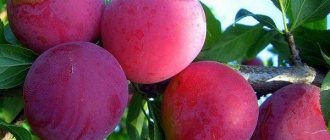
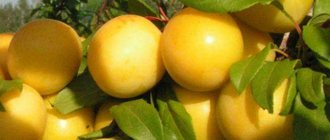
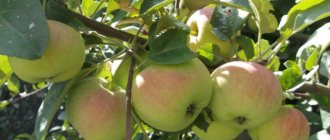

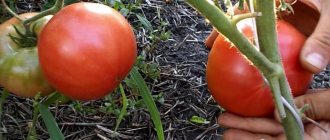
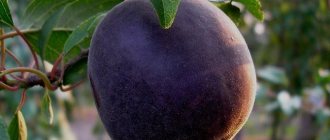
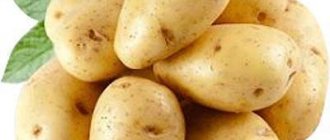
![Tinkoff (Debit card) [CPS] RU](https://adzumi-sushi.ru/wp-content/uploads/tinkoff-debetovaya-karta-cps-ru15-330x140.jpg)

